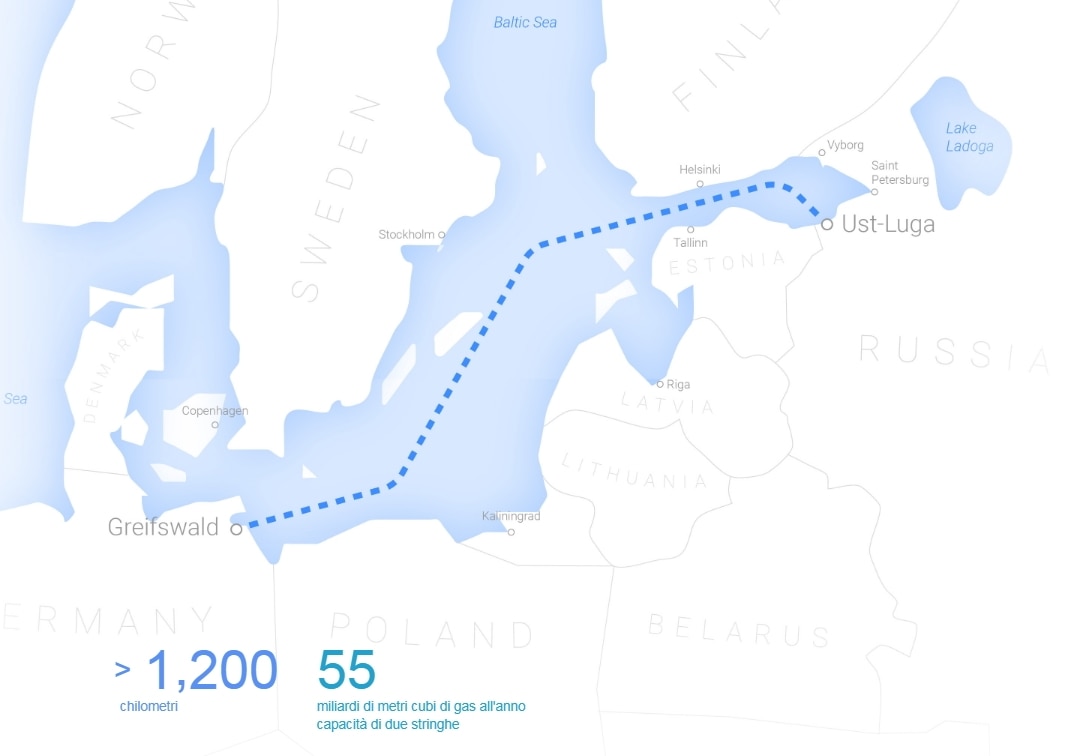Germany suspends the approval of the Nord Stream 2 gas pipeline. And in Europe the price of gas soars
Share
November 17, 2021
What is that
Nord Stream 2 was completed on 6 September 2021 and is a pipeline that transports natural gas from Russian fields to the German coast, extends 1230 km under the Baltic Sea and is the longest pipeline in the world. It was designed to upgrade the gas already supplied by Russia to Europe by doubling the route of the existing Nord Stream which runs parallel to the new project. The infrastructure cost $ 11 billion and is wholly owned by the state-owned Russian energy company Gazprom. The company also owns 51% of the original Nord Stream pipeline. Before the construction of the two Nord Stream gas pipelines, Russian gas passed overland, through the territories of Ukraine and Belarus.Once operational, Nord Stream 2 will allow Moscow to transport an additional 55 billion cubic meters of natural gas to Germany per year.
History
The Nord Stream project was born in 1997, due to the geopolitical situation of that period foresaw that the pipeline did not cross either the Baltic countries or Poland, Belarus and Ukraine. Nations that are thus excluded from any transit rights and thus unable to intervene on the path to suspend the supply of gas to Europe and put negotiating pressure on Russia. The laying of the first Nord Stream pipeline was completed on 4 May 2011 and on 6 September of the same year it went into operation, inaugurated by the then Russian President Dmitry Medvedev, by the French Prime Minister Francois Fillon and by Chancellor Angela Merkel on 8 November. 2011. A second line of the Nord Stream gas pipeline is then built and comes into operation in October 2012.And shortly afterwards, a further expansion of the gas volume to be brought to Europe begins. Thus was born the Nord Stream 2 project.
The controversy
Although supporters of the pipeline, including Germany and Russia, see it as a great deal providing cheaper and cleaner energy, Nord Stream 2 has drawn the ire of many opponents. Its main feature, the one that Americans do not like, is to completely bypass the Baltic states, those of Visegrad (Czech Republic, Slovakia, Poland, Hungary), Ukraine and Belarus, reducing the amount of cubic meters of gas to be to ship to Europe but thus sweeping away any possible claims by these countries to put pressure on the negotiating table with Moscow. US leaders and lawmakers, both Democratic and Republican, fear that the Baltic pipeline would give Russia too much leverage over European gas supplies.handing over to Russian President Vladimir Putin too broad a market and geopolitical power. Even President Trump, during his mandate, has tried unsuccessfully to torpedo the project, claiming that Nord Stream 2 would have made Germany a "prisoner of Russia", fears basically shared by President Biden as well.
Fun Fact
Each line of the Nord Stream 2 gas pipeline comprises approximately 100,000 individual pipes, each 12 m long.
The 12-meter sections of pipe were welded together and then laid in the Baltic Sea using a pipelay vessel.
The walls of the pipes are up to 41 mm thick with a constant internal diameter of 1,153 mm.
The pipes are coated internally to reduce friction, and externally to reduce corrosion, increase protection and add weight, making the pipeline more stable on the seabed.

